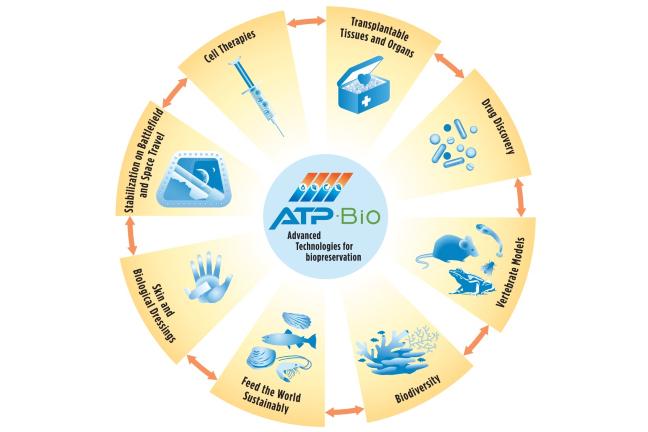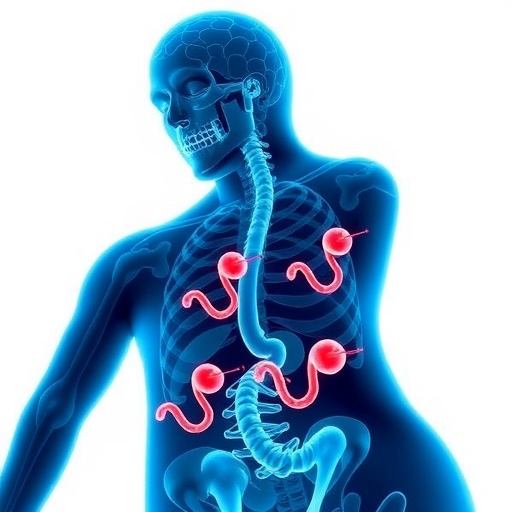The grant is the campus’ first successful bid for an NSF Engineering Research Center

Credit: University of Minnesota
The National Science Foundation, or NSF, announced today that it has awarded a $26 million Engineering Research Center grant to the University of Minnesota and Massachusetts General Hospital, in collaboration with UC Riverside and UC Berkeley.
The center, called Advanced Technologies for the Preservation of Biological Systems, or ATP-Bio, aims to develop and deploy breakthrough bioengineering technology to preserve a wide range of biological systems: cells, tissues, organs and whole organisms.
The grant is UC Riverside’s first successful bid for an Engineering Research Center in the campus’s history. Mechanical engineering professor Guillermo Aguilar leads the project at the Marlan and Rosemary Bourns College of Engineering. He is joined by Lorenzo Mangolini, also in mechanical engineering, and chemistry professor Yadong Yin. The prestigious grant comes after a grueling highly competitive two-year process that resulted in just four final awards.
“This award is additional confirmation of the deep faculty expertise that defines UCR,” said Chancellor Kim A. Wilcox. “We are excited about the new center and look forward to the discoveries the team and their collaborators will develop.”
The University of Minnesota will serve as the grant’s administrative home with co-leadership from Massachusetts General Hospital and collaboration with the University of California, Riverside, and the University of California, Berkeley.
“As the University of California, Riverside’s first successful ERC, this marks a significant milestone not only for the Bourns College of Engineering, but also the university as a whole,” said Bourns Dean Christopher Lynch. “This exciting collaboration will leverage our researchers’ expertise and create even more student and scholar exchange opportunities with institutions across the country and later on with our international partners. We look forward to seeing this project serve as a catalyst of workforce development, which will sustain these important scientific and technological efforts toward biopreservation.”
The ability to “stop biological time” has potential benefits such as revolutionizing organ transplant and tissue banking, accelerating and reducing the cost of drug research and discovery, improving treatment of severe injuries, and advancing cryopreservation of animal embryos.
“We are delighted by this opportunity that NSF has given us,” Aguilar said. “With the University of Minnesota, UCR will co-lead the research on rapid and uniform warming of tissues and cells, capitalizing and expanding on our collective expertise in nanomaterials synthesis, biomedical optics, and laser thermal processes. The outcome of our studies will contribute to the development of technology to bring biological systems back from suspended animation.”
ATP-Bio also includes educational programs and research, initiatives to increase the diversity of students and professionals in science, technology, engineering, and math fields, a robust innovation ecosystem involving over 50 companies and organizations, and a team devoted to guiding the ethical development and deployment of ATP-Bio technologies.
“This award will boost UCR’s efforts to position the Inland Empire as a hotbed of innovation and entrepreneurial spirit,” said Rosibel Ochoa, associate vice chancellor of technology partnerships. “With this NSF ERC, we are emerging as one of the important players in biotechnology advances.”
The award, which is renewable in 2025 for another five years, includes principal investigators John Bischof and Gillian Roehrig from the University of Minnesota; Mehmet Toner from Massachusetts General Hospital; Guillermo Aguilar from the University of California, Riverside; and Kevin Healy from the University of California, Berkeley, with the participation of 30 senior personnel from seven institutions across the U.S. and Canada.
“For the last 35 years, engineering research centers have helped shape science and technology in the United States by fostering innovation and collaboration among industry, universities, and government agencies,” said NSF Director Sethuraman Panchanathan. “As we kick off a new generation of centers, NSF will continue to work with its partners to ensure the success of these collaborative enterprises and the transformative, convergent research impact they produce.”
###
Learn more about ATP-Bio by reading this fact sheet.
Media Contact
Holly Ober
[email protected]
Original Source
https:/




